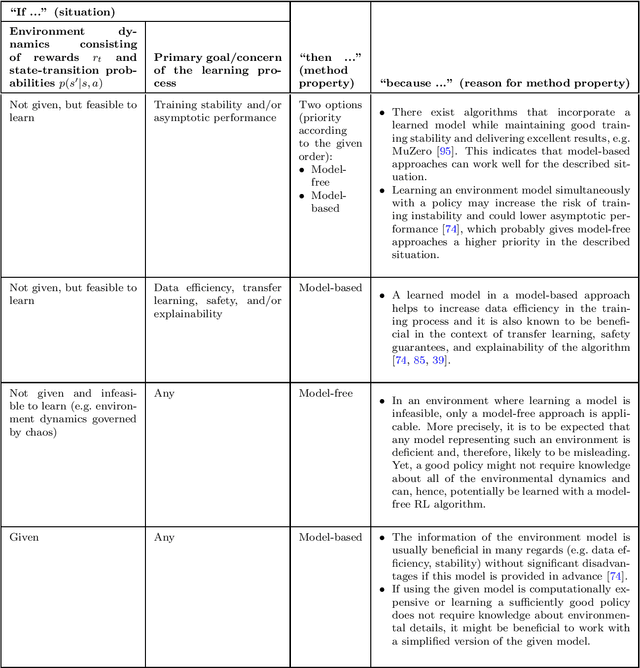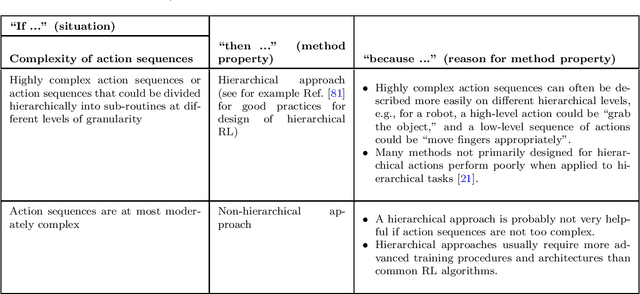Julian Rodemann
Ludwig-Maximilians-Universität München
GUARD: Glocal Uncertainty-Aware Robust Decoding for Effective and Efficient Open-Ended Text Generation
Aug 28, 2025Abstract:Open-ended text generation faces a critical challenge: balancing coherence with diversity in LLM outputs. While contrastive search-based decoding strategies have emerged to address this trade-off, their practical utility is often limited by hyperparameter dependence and high computational costs. We introduce GUARD, a self-adaptive decoding method that effectively balances these competing objectives through a novel "Glocal" uncertainty-driven framework. GUARD combines global entropy estimates with local entropy deviations to integrate both long-term and short-term uncertainty signals. We demonstrate that our proposed global entropy formulation effectively mitigates abrupt variations in uncertainty, such as sudden overconfidence or high entropy spikes, and provides theoretical guarantees of unbiasedness and consistency. To reduce computational overhead, we incorporate a simple yet effective token-count-based penalty into GUARD. Experimental results demonstrate that GUARD achieves a good balance between text diversity and coherence, while exhibiting substantial improvements in generation speed. In a more nuanced comparison study across different dimensions of text quality, both human and LLM evaluators validated its remarkable performance. Our code is available at https://github.com/YecanLee/GUARD.
Generalization Bounds and Stopping Rules for Learning with Self-Selected Data
May 12, 2025Abstract:Many learning paradigms self-select training data in light of previously learned parameters. Examples include active learning, semi-supervised learning, bandits, or boosting. Rodemann et al. (2024) unify them under the framework of "reciprocal learning". In this article, we address the question of how well these methods can generalize from their self-selected samples. In particular, we prove universal generalization bounds for reciprocal learning using covering numbers and Wasserstein ambiguity sets. Our results require no assumptions on the distribution of self-selected data, only verifiable conditions on the algorithms. We prove results for both convergent and finite iteration solutions. The latter are anytime valid, thereby giving rise to stopping rules for a practitioner seeking to guarantee the out-of-sample performance of their reciprocal learning algorithm. Finally, we illustrate our bounds and stopping rules for reciprocal learning's special case of semi-supervised learning.
A Statistical Case Against Empirical Human-AI Alignment
Feb 20, 2025



Abstract:Empirical human-AI alignment aims to make AI systems act in line with observed human behavior. While noble in its goals, we argue that empirical alignment can inadvertently introduce statistical biases that warrant caution. This position paper thus advocates against naive empirical alignment, offering prescriptive alignment and a posteriori empirical alignment as alternatives. We substantiate our principled argument by tangible examples like human-centric decoding of language models.
Towards Better Open-Ended Text Generation: A Multicriteria Evaluation Framework
Oct 24, 2024



Abstract:Open-ended text generation has become a prominent task in natural language processing due to the rise of powerful (large) language models. However, evaluating the quality of these models and the employed decoding strategies remains challenging because of trade-offs among widely used metrics such as coherence, diversity, and perplexity. Decoding methods often excel in some metrics while underperforming in others, complicating the establishment of a clear ranking. In this paper, we present novel ranking strategies within this multicriteria framework. Specifically, we employ benchmarking approaches based on partial orderings and present a new summary metric designed to balance existing automatic indicators, providing a more holistic evaluation of text generation quality. Furthermore, we discuss the alignment of these approaches with human judgments. Our experiments demonstrate that the proposed methods offer a robust way to compare decoding strategies, exhibit similarities with human preferences, and serve as valuable tools in guiding model selection for open-ended text generation tasks. Finally, we suggest future directions for improving evaluation methodologies in text generation. Our codebase, datasets, and models are publicly available.
Reciprocal Learning
Aug 12, 2024Abstract:We demonstrate that a wide array of machine learning algorithms are specific instances of one single paradigm: reciprocal learning. These instances range from active learning over multi-armed bandits to self-training. We show that all these algorithms do not only learn parameters from data but also vice versa: They iteratively alter training data in a way that depends on the current model fit. We introduce reciprocal learning as a generalization of these algorithms using the language of decision theory. This allows us to study under what conditions they converge. The key is to guarantee that reciprocal learning contracts such that the Banach fixed-point theorem applies. In this way, we find that reciprocal learning algorithms converge at linear rates to an approximately optimal model under relatively mild assumptions on the loss function, if their predictions are probabilistic and the sample adaption is both non-greedy and either randomized or regularized. We interpret these findings and provide corollaries that relate them to specific active learning, self-training, and bandit algorithms.
How to Choose a Reinforcement-Learning Algorithm
Jul 30, 2024



Abstract:The field of reinforcement learning offers a large variety of concepts and methods to tackle sequential decision-making problems. This variety has become so large that choosing an algorithm for a task at hand can be challenging. In this work, we streamline the process of choosing reinforcement-learning algorithms and action-distribution families. We provide a structured overview of existing methods and their properties, as well as guidelines for when to choose which methods. An interactive version of these guidelines is available online at https://rl-picker.github.io/.
Adaptive Contrastive Search: Uncertainty-Guided Decoding for Open-Ended Text Generation
Jul 26, 2024Abstract:Decoding from the output distributions of large language models to produce high-quality text is a complex challenge in language modeling. Various approaches, such as beam search, sampling with temperature, $k-$sampling, nucleus $p-$sampling, typical decoding, contrastive decoding, and contrastive search, have been proposed to address this problem, aiming to improve coherence, diversity, as well as resemblance to human-generated text. In this study, we introduce adaptive contrastive search, a novel decoding strategy extending contrastive search by incorporating an adaptive degeneration penalty, guided by the estimated uncertainty of the model at each generation step. This strategy is designed to enhance both the creativity and diversity of the language modeling process while at the same time producing coherent and high-quality generated text output. Our findings indicate performance enhancement in both aspects, across different model architectures and datasets, underscoring the effectiveness of our method in text generation tasks. Our code base, datasets, and models are publicly available.
Towards Bayesian Data Selection
Jun 24, 2024Abstract:A wide range of machine learning algorithms iteratively add data to the training sample. Examples include semi-supervised learning, active learning, multi-armed bandits, and Bayesian optimization. We embed this kind of data addition into decision theory by framing data selection as a decision problem. This paves the way for finding Bayes-optimal selections of data. For the illustrative case of self-training in semi-supervised learning, we derive the respective Bayes criterion. We further show that deploying this criterion mitigates the issue of confirmation bias by empirically assessing our method for generalized linear models, semi-parametric generalized additive models, and Bayesian neural networks on simulated and real-world data.
Bayesian Data Selection
Jun 18, 2024Abstract:A wide range of machine learning algorithms iteratively add data to the training sample. Examples include semi-supervised learning, active learning, multi-armed bandits, and Bayesian optimization. We embed this kind of data addition into decision theory by framing data selection as a decision problem. This paves the way for finding Bayes-optimal selections of data. For the illustrative case of self-training in semi-supervised learning, we derive the respective Bayes criterion. We further show that deploying this criterion mitigates the issue of confirmation bias by empirically assessing our method for generalized linear models, semi-parametric generalized additive models, and Bayesian neural networks on simulated and real-world data.
Statistical Multicriteria Benchmarking via the GSD-Front
Jun 06, 2024



Abstract:Given the vast number of classifiers that have been (and continue to be) proposed, reliable methods for comparing them are becoming increasingly important. The desire for reliability is broken down into three main aspects: (1) Comparisons should allow for different quality metrics simultaneously. (2) Comparisons should take into account the statistical uncertainty induced by the choice of benchmark suite. (3) The robustness of the comparisons under small deviations in the underlying assumptions should be verifiable. To address (1), we propose to compare classifiers using a generalized stochastic dominance ordering (GSD) and present the GSD-front as an information-efficient alternative to the classical Pareto-front. For (2), we propose a consistent statistical estimator for the GSD-front and construct a statistical test for whether a (potentially new) classifier lies in the GSD-front of a set of state-of-the-art classifiers. For (3), we relax our proposed test using techniques from robust statistics and imprecise probabilities. We illustrate our concepts on the benchmark suite PMLB and on the platform OpenML.
 Add to Chrome
Add to Chrome Add to Firefox
Add to Firefox Add to Edge
Add to Edge